Recent Posts
What to do in case of a house fire
12/11/2024 (Permalink)
 With professional restoration and recovery, your home can be restored to pre-fire conditions faster than you think.
With professional restoration and recovery, your home can be restored to pre-fire conditions faster than you think.
A house fire can be a terrifying experience, but knowing what to do in case of an emergency can make all the difference. At SERVPRO® of Arnold/North Jefferson County, we understand how devastating a fire can be, and we are here to provide expert insights on the critical steps you should take if your home catches fire.
1. Evacuate Immediately
The first and most important thing to do when a fire breaks out is to evacuate the premises. According to the National Fire Protection Association (NFPA), house fires spread quickly, and you may have as little as two minutes to safely escape after the smoke alarm sounds. It’s essential to have a fire escape plan in place, practice it regularly with your family, and ensure that everyone knows at least two ways out of every room.
2. Call 911
Once you’re safely outside, call 911 immediately. Never attempt to re-enter the house to retrieve belongings, as this can put your life in danger. Firefighters have the equipment and training to handle the situation safely and effectively, so leave it to the professionals.
3. Use a Fire Extinguisher if Safe
If the fire is small and you have easy access to a fire extinguisher, you may attempt to put it out yourself. However, you should only do so if the fire is contained, the room isn’t filled with smoke, and you have a clear exit path. Remember the PASS method when using an extinguisher: Pull the pin, Aim at the base of the fire, Squeeze the lever, and Sweep from side to side.
4. Stop, Drop, and Roll
If your clothes catch fire, it’s important to know the “Stop, Drop, and Roll” technique. Stop where you are, drop to the ground, cover your face with your hands, and roll back and forth until the flames are extinguished. This can prevent further burns and injuries.
5. Call Your Insurance Company
After the fire is under control and you’ve ensured everyone’s safety, the next step is to contact your insurance company. They will guide you through the process of filing a claim and determining what damages will be covered. SERVPRO of Arnold/North Jefferson County is available to assist with fire damage restoration and can work directly with your insurance provider to help you recover as quickly as possible.
House fires are life-threatening emergencies, but having a plan in place and knowing what to do can save lives. Remember to evacuate immediately, call 911, and never re-enter a burning building. If you need assistance after a fire, contact SERVPRO of Arnold/North Jefferson County for expert fire damage restoration services. We're here to help you get your life back to normal.
With professional restoration and recovery, your home can be restored to pre-fire conditions faster than you think.
Mold Prevention Tips for Every Homeowner
11/13/2024 (Permalink)
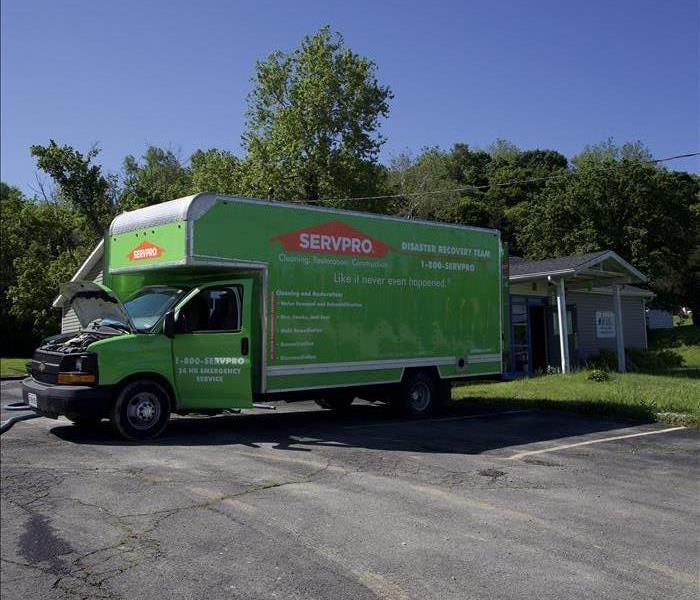 Preventing mold in your home requires vigilance and proactive measures.
Preventing mold in your home requires vigilance and proactive measures.
Mold growth can be a significant concern for homeowners, leading to structural damage and costly repairs if not managed properly. At SERVPRO® of Arnold/North Jefferson County, we understand the importance of mold prevention and want to share expert tips to help you safeguard your home. By following these best practices, you can reduce the risk of mold growth and maintain a safe and comfortable living environment.
Understanding the Causes of Mold Growth
Before diving into prevention tips, it’s essential to understand what causes mold to grow in the first place. Mold thrives in damp, humid environments, typically where moisture is prevalent. This can include areas such as basements, bathrooms, and kitchens. Mold spores are always present in the air, but they only become a problem when they find a suitable surface with the right conditions—moisture, warmth, and organic material.
Keep Indoor Humidity Levels in Check
One of the most effective ways to prevent mold is by controlling the humidity levels in your home. According to the Environmental Protection Agency (EPA), indoor humidity should be kept below 60%, ideally between 30% and 50%. Use a hygrometer to monitor humidity levels and consider using dehumidifiers in areas prone to excess moisture, such as basements and bathrooms. Additionally, ensure that your home is well-ventilated, particularly in moisture-prone areas. Running exhaust fans during and after showers or cooking can help reduce humidity levels.
Address Water Leaks Immediately
Water leaks are a primary cause of mold growth in homes. Even a small leak, if left unattended, can lead to significant mold problems. Regularly inspect your home for any signs of leaks, especially around pipes, roofs, windows, and doors. If you notice any leaks, it’s crucial to repair them immediately. Remember to dry the affected area thoroughly after any water intrusion, as mold can begin to grow within 24-48 hours.
Proper Ventilation Is Key
Ensuring that your home is properly ventilated is essential in preventing mold. This is particularly important in high-moisture areas such as bathrooms, kitchens, and laundry rooms. Install exhaust fans in these spaces and make sure they are functioning correctly. In addition, keep windows open when possible to allow fresh air to circulate and reduce moisture buildup. In crawl spaces and attics, proper ventilation is critical to preventing condensation, which can lead to mold growth.
Use Mold-Resistant Products
When renovating or building your home, consider using mold-resistant products. Mold-resistant drywall, paint, and insulation are excellent choices for areas prone to moisture, such as basements and bathrooms. These products are designed to withstand mold growth, providing an added layer of protection for your home. Additionally, using mildew-resistant shower curtains and cleaning products can help reduce the risk of mold in bathrooms.
Clean and Maintain Gutters Regularly
Clogged gutters can lead to water overflow, which can cause moisture to seep into your home’s walls and foundation, creating an ideal environment for mold. To prevent this, clean your gutters regularly, especially during the fall when leaves and debris can accumulate. Ensure that downspouts direct water away from your home’s foundation to prevent pooling water from causing moisture problems.
Monitor Indoor Plants
Indoor plants can add beauty to your home, but they can also contribute to mold growth if not properly cared for. Overwatering plants can create excess moisture, which can lead to mold in the soil and on nearby surfaces. To prevent this, avoid overwatering your plants and remove any dead leaves or debris from the soil. Using a moisture meter can help you determine the right amount of water your plants need.
Preventing mold in your home requires vigilance and proactive measures. By keeping humidity levels in check, addressing water leaks promptly, ensuring proper ventilation, using mold-resistant products, maintaining gutters, and monitoring indoor plants, you can significantly reduce the risk of mold growth. At SERVPRO of Arnold/North Jefferson County, we are committed to helping homeowners protect their properties from mold. If you ever suspect mold in your home, our expert team is here to provide professional mold remediation services.
For more information on mold prevention and remediation, visit our website or contact SERVPRO of Arnold/North Jefferson County today. We're here to help you maintain a mold-free home.
The Crucial Role of Swift Water Damage Restoration: Why Every Second Counts
10/9/2024 (Permalink)
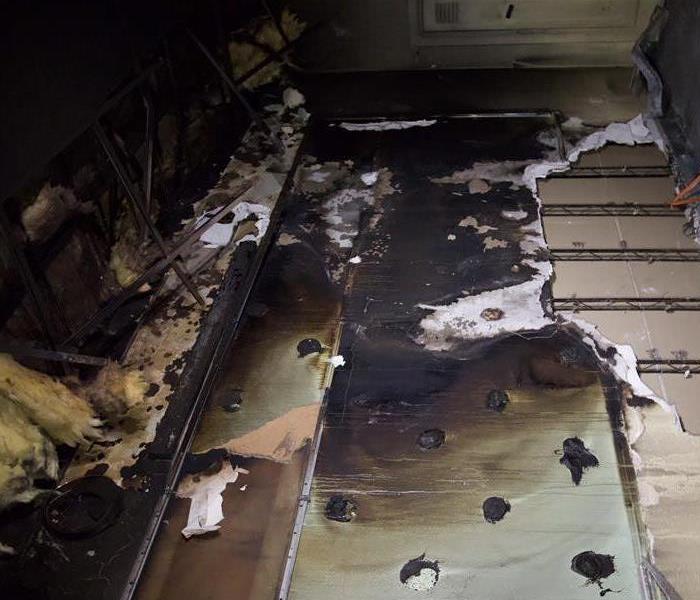 Explore the importance of timely water damage restoration and share insights into why acting fast is crucial.
Explore the importance of timely water damage restoration and share insights into why acting fast is crucial.
Water damage in St. Louis, MO, can be devastating, and a prompt response is essential to minimizing its impact. At SERVPRO®, we understand that time is of the essence when dealing with water damage, and our experienced professionals are trained to respond quickly to restore your property efficiently. In this blog, we will explore the importance of timely water damage restoration and share insights into why acting fast is crucial.
The Immediate Impact of Water Damage
When water invades your property, the damage can escalate quickly. Within minutes, water can seep into porous materials, causing them to swell and break down. Wooden furniture, flooring, and drywall are particularly susceptible. The longer the water sits, the more extensive the damage becomes, leading to increased repair costs and prolonged restoration times.
Why Quick Response Is Key
One of the most critical factors in water damage restoration is response time. According to the Institute of Inspection, Cleaning, and Restoration Certification (IICRC), the best time to begin water damage restoration is within the first 24-48 hours. Swift action can significantly reduce the extent of damage and prevent further complications. A study by the IICRC found that timely response can reduce water damage costs by up to 30 percent.
SERVPRO's Expertise in Water Damage Restoration
At SERVPRO, we pride ourselves on our rapid response times and comprehensive restoration services. Our team is equipped with advanced technology and expertise to handle water damage, from extraction and drying to repairs and restoration. We understand that every minute counts, and our goal is to restore your property as quickly and efficiently as possible.
Benefits of Choosing SERVPRO
- Fast Response Times: We are available 24/7 to respond to emergencies.
- Expertise and Experience: Our certified professionals have extensive training in water damage restoration.
- Advanced Equipment: We use the latest technology to detect, extract, and dry water from affected areas.
- Comprehensive Services: From initial assessment to final restoration, we handle every aspect of the process.
Conclusion
Water damage can be overwhelming, but timely intervention can make all the difference. At SERVPRO, we are committed to providing prompt, professional, and efficient water damage restoration services. Trust our team to restore your property and bring you peace of mind during a challenging time. Remember, when it comes to water damage, time is of the essence—contact SERVPRO at the first sign of trouble.
Essential Gutter Maintenance for Storm Preparedness: How SERVPRO® Can Help
9/11/2024 (Permalink)
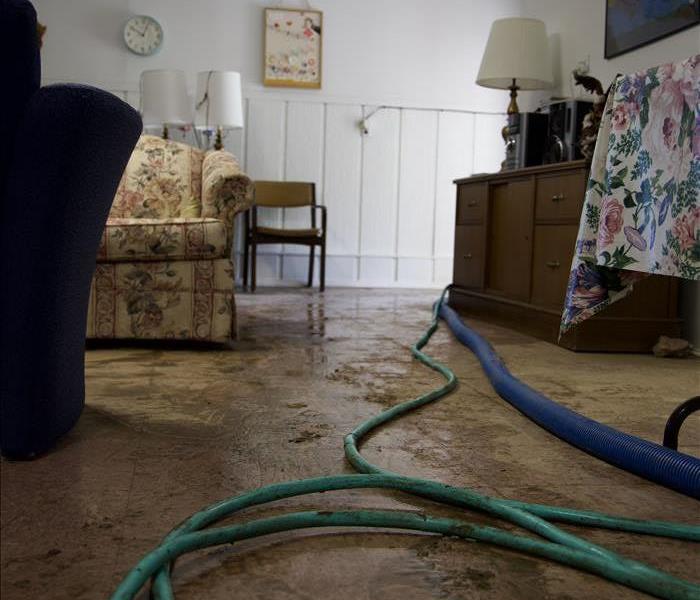 We explore the importance of gutter maintenance for storm preparedness and how SERVPRO® can assist you in keeping your home safe and secure.
We explore the importance of gutter maintenance for storm preparedness and how SERVPRO® can assist you in keeping your home safe and secure.
Gutter maintenance is a crucial, yet often overlooked, aspect of home upkeep, especially when preparing for storms. Neglecting your gutters can lead to significant water damage and costly repairs. In this blog, we will explore the importance of gutter maintenance for storm preparedness and how SERVPRO® can assist you in keeping your home safe and secure.
The Impact of Neglected Gutters
Did you know that clogged gutters are responsible for over 1,000,000 water damage insurance claims each year in the United States? Proper gutter maintenance is essential to prevent water from overflowing and causing damage to your home's foundation, roof, and interior. When gutters are clogged with leaves, debris, and dirt, they cannot effectively channel rainwater away from your home, increasing the risk of water intrusion and structural damage during storms.
Why Gutter Maintenance is Critical for Storm Preparedness
Prevents Water Damage
One of the primary functions of gutters is to direct rainwater away from your home. When gutters are blocked, water can overflow and seep into the foundation, leading to basement flooding and foundation erosion. Regular gutter maintenance ensures that water flows freely, preventing these issues and safeguarding your property.
Protects Your Roof
Clogged gutters can cause water to back up onto the roof, leading to rotting fascia boards, soffits, and even roof leaks. By keeping your gutters clean and clear, you protect your roof from water damage and extend its lifespan.
Avoids Pest Infestations
Standing water in clogged gutters creates an ideal breeding ground for pests such as mosquitoes, rodents, and birds. Regular maintenance helps prevent these infestations, keeping your home healthier and more comfortable.
Reduces Landscaping Damage
Overflowing gutters can cause water to spill over and damage your landscaping, eroding soil and harming plants. Properly maintained gutters direct water away from your garden and yard, preserving your outdoor spaces.
SERVPRO: Your Partner in Gutter Maintenance
SERVPRO understands the importance of gutter maintenance in storm preparedness and offers comprehensive services to help you maintain your gutters effectively.
Professional Cleaning Services
Our team of experienced professionals provides thorough gutter cleaning services, removing all debris and ensuring that your gutters function optimally. We use specialized equipment to safely and efficiently clean gutters, preventing potential damage to your home.
Regular Maintenance Plans
SERVPRO offers regular maintenance plans tailored to your needs. By scheduling routine inspections and cleanings, we help you stay ahead of potential issues and keep your gutters in top condition year-round.
Emergency Response
In the event of a storm, SERVPRO is ready to respond promptly to any gutter-related emergencies. Our team can quickly assess and repair any damage, minimizing the impact on your home and preventing further issues.
Trust SERVPRO for Your Gutter Maintenance Needs
Regular gutter maintenance is essential for protecting your home in St. Louis, MO, from storm damage and ensuring its longevity. SERVPRO is your trusted partner in keeping your gutters clean and functional, providing professional services that give you peace of mind.
Don't wait for a storm to reveal problems with your gutters. Contact SERVPRO today to schedule a gutter maintenance service and ensure your home is prepared for any weather.
Stay Prepared: Understanding Different Types of Fire Extinguishers and Their Uses
8/14/2024 (Permalink)
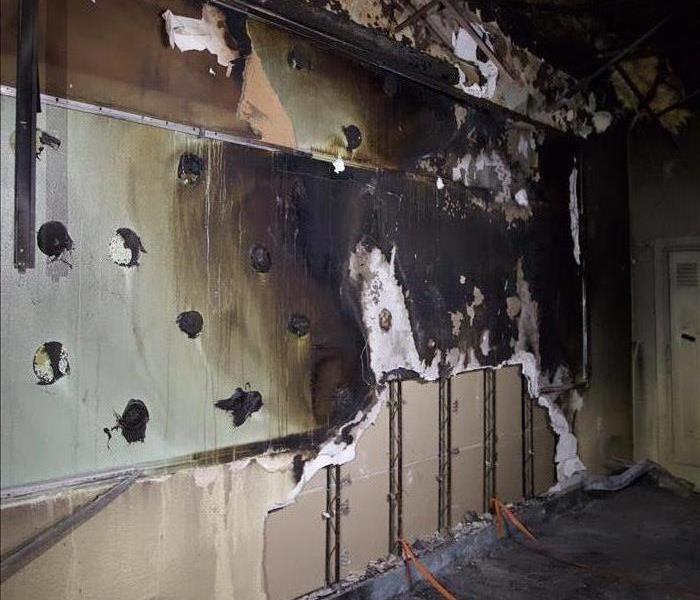 In St. Louis, MO, where diverse types of buildings require tailored fire safety measures, understanding fire extinguishers is essential.
In St. Louis, MO, where diverse types of buildings require tailored fire safety measures, understanding fire extinguishers is essential.
Fire extinguishers are crucial tools for home safety, capable of preventing small fires from becoming catastrophic. However, not all fire extinguishers are created equal. Knowing the different types and how to use them can make a significant difference in an emergency. In St. Louis, MO, where diverse types of buildings require tailored fire safety measures, understanding fire extinguishers is essential.
Types of Fire Extinguishers
Class A Fire Extinguishers
Class A fire extinguishers are designed for ordinary combustibles such as wood, paper, cloth, and some plastics. These extinguishers use water, foam, or dry chemicals to smother the flames.
Class B Fire Extinguishers
Class B fire extinguishers are meant for flammable liquids like gasoline, oil, and grease. These extinguishers typically use carbon dioxide (CO2) or dry chemicals to effectively cut off the fire’s oxygen supply, thus extinguishing it.
Class C Fire Extinguishers
Class C fire extinguishers are used for electrical fires. These extinguishers use non-conductive agents like CO2 or dry chemicals to ensure that electricity is not conducted during the extinguishing process, preventing further hazards.
Class D Fire Extinguishers
Class D fire extinguishers are specialized for fires involving combustible metals such as magnesium, titanium, and sodium. These extinguishers use a dry powder that absorbs heat and prevents the fire from spreading.
Class K Fire Extinguishers
Class K fire extinguishers are designed for kitchen fires involving cooking oils and fats. They use a wet chemical agent that reacts with the fats to form a non-flammable soapy layer, effectively smothering the fire.
How to Use a Fire Extinguisher: The PASS Technique
Regardless of the type of fire extinguisher, the method for using them remains the same. Remember the acronym PASS:
- Pull the pin to break the tamper seal.
- Aim low, pointing the nozzle at the base of the fire.
- Squeeze the handle to release the extinguishing agent.
- Sweep from side to side at the base of the fire until it is extinguished.
Practicing this technique can make a significant difference in an emergency.
Choosing the Right Fire Extinguisher for Your Home
In St. Louis, MO, with its mix of residential and commercial properties, it’s essential to have the right type of fire extinguisher readily available. Assess the potential fire hazards in your home or business and choose extinguishers accordingly. For most households, a multi-purpose ABC extinguisher is a good choice as it covers Class A, B, and C fires.
SERVPRO®: Your Fire Safety Resource
SERVPRO is committed to helping you prepare for and respond to fire emergencies. Our team offers comprehensive fire damage restoration services and expert advice on fire prevention. Contact us today to learn more about how we can assist in safeguarding your home or business.
Understanding the different types of fire extinguishers and their proper use is a key component of fire safety. Equip your home with the appropriate fire extinguishers and ensure everyone knows how to use them. This knowledge can be crucial in protecting your property and loved ones from fire hazards.
The Importance of Mold Inspections in Preventing Infestations
7/10/2024 (Permalink)
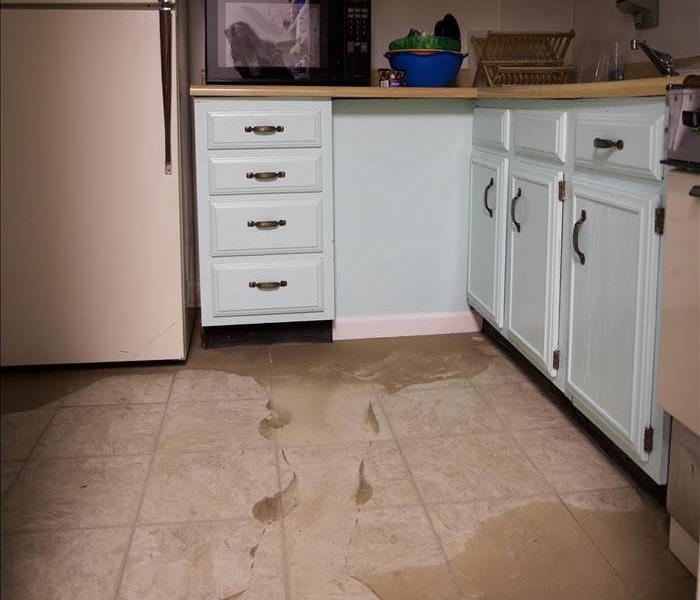 This is where mold inspections play a vital role in identifying and addressing mold concerns before they escalate into larger problems.
This is where mold inspections play a vital role in identifying and addressing mold concerns before they escalate into larger problems.
As homeowners, ensuring the safety and integrity of our living spaces is a top priority. One crucial aspect of maintaining a healthy home environment is being proactive in preventing mold infestations. Mold can be a persistent issue that thrives in damp and humid conditions, posing potential risks to both your property and those residing in it. This is where mold inspections play a vital role in identifying and addressing mold concerns before they escalate into larger problems.
Early Detection and Prevention
By conducting regular mold inspections, you can catch potential issues early on before they develop into full-blown infestations. Professional mold inspectors are trained to identify signs of mold growth that may not be visible to the untrained eye. This early detection can help you implement preventive measures and address underlying causes of mold growth, such as poor ventilation, water leaks, or high humidity levels.
Comprehensive Assessment of Risk Factors
During a mold inspection, experts will assess the risk factors present in your home that could contribute to mold growth. This includes examining areas prone to moisture buildup, inspecting plumbing systems for leaks, and evaluating ventilation systems. By conducting a thorough assessment, inspectors can provide valuable insights into areas of concern and recommend targeted solutions to mitigate mold risk.
Peace of Mind and Property Preservation
Investing in regular mold inspections provides homeowners with peace of mind knowing that their property is being proactively monitored for potential mold issues. Detecting mold early and addressing it promptly can help preserve the structural integrity of your home and prevent extensive damage that may be costly to repair in the future. Additionally, preserving the indoor air quality and cleanliness of your living spaces contributes to a healthier and more comfortable environment for you and your family.
Expert Guidance and Solutions
Professional mold inspectors have the knowledge and tools to accurately assess mold risk factors and provide tailored solutions to address specific concerns. Whether it's recommending improved ventilation strategies, identifying and repairing water leaks, or conducting targeted remediation efforts, their expertise can help you safeguard your property against mold infestations.
By recognizing the importance of regular mold inspections in preventing infestations, you are taking proactive steps to protect your home and loved ones. If you have concerns about mold growth or want to schedule a mold inspection, consider reaching out to SERVPRO®, a trusted leader in mold remediation services. Our experienced team is dedicated to providing thorough inspections, personalized solutions, and peace of mind for homeowners seeking to maintain a healthy living environment.
For more information on mold inspections and prevention strategies, feel free to contact SERVPRO for expert guidance and assistance.
Understanding the Dangers: Risks Associated with Standing Water in Homes
6/10/2024 (Permalink)
Standing water in homes can result from various sources, including flooding, burst pipes, leaks, or inadequate drainage. While it may seem like a mere inconvenience at first glance, standing water poses significant risks to both property and personal safety. In this blog, we'll delve into the dangers associated with standing water in homes, highlighting the potential health hazards, structural damage, and safety risks that homeowners need to be aware of.
Hazards
- Mold Growth: Standing water creates a breeding ground for mold and mildew, which can thrive in damp, humid environments. Mold spores can spread quickly, leading to secondary damages.
- Bacterial Contamination: Standing water can become contaminated with bacteria, viruses, and other pathogens, especially if it originates from sources such as sewage backups or floodwaters.
- Mosquito Breeding: Stagnant water provides an ideal breeding ground for mosquitoes.
Structural Damage
- Foundation Damage: Excessive moisture from standing water can weaken the foundation of a home, leading to cracks, settling, and structural instability over time. This can compromise the integrity of the entire structure and result in costly repairs.
- Wood Rot: Standing water can penetrate wood surfaces, such as floors, walls, and structural beams, causing them to rot and decay. Wood rot not only weakens the structural integrity of the home but also provides a conducive environment for mold growth.
- Damage to Flooring and Finishes: Prolonged exposure to standing water can damage flooring materials such as hardwood, laminate, and carpeting, as well as wall finishes such as paint and wallpaper. This can result in warping, discoloration, and deterioration of interior surfaces.
Safety Risks
- Slip and Fall Accidents: Standing water creates slippery surfaces that increase the risk of slip and fall accidents, especially on smooth flooring materials such as tile or vinyl. This can cause injuries ranging from minor bruises to more severe fractures or head trauma.
- Electrical Hazards: Water and electricity don't mix, and standing water can pose a serious electrical hazard if it comes into contact with electrical outlets, appliances, or wiring. This can lead to electrocution or electrical fires.
- Structural Collapse: In extreme cases, standing water can compromise the structural integrity of a home to the point of collapse. This poses a grave danger to occupants and emergency responders, especially if the collapse occurs unexpectedly.
Standing water in homes is more than just a nuisance – it's a serious hazard that can jeopardize the safety and structural integrity of your property. From mold growth and bacterial contamination to structural damage and safety risks, the dangers associated with standing water are numerous and varied. As such, it's crucial for homeowners to address standing water promptly and effectively, whether through proper drainage, water damage restoration, or professional remediation services. By understanding the risks and taking proactive measures to mitigate them, homeowners can protect their property and ensure the safety and well-being of their families.
Restoring the Northwest: SERVPRO® plays an essential Role in Storm Damage Recovery
5/8/2024 (Permalink)
The picturesque landscapes of the Northwest are not immune to the powerful forces of nature. When storms unleash their fury, homes and businesses in this region often bear the brunt of the impact. In the aftermath, a beacon of hope emerges in the form of SERVPRO®, a trusted partner in storm damage restoration. In this blog, we delve into the vital role SERVPRO plays in restoring the Northwest after nature's tumultuous displays.
Swift Emergency Response
The first crucial role SERVPRO of Arnold/ North Jefferson County plays in storm damage restoration is its swift emergency response. When disaster strikes, time is of the essence. SERVPRO's 24/7 availability ensures that a team of highly trained professionals is on standby, ready to mobilize and respond to the urgent needs of homeowners and businesses affected by storms.
Upon arrival, SERVPRO conducts a comprehensive assessment of the storm damage. This includes evaluating the extent of structural damage, water intrusion, and potential hazards. Based on this assessment, a tailored restoration plan is formulated to address the unique challenges posed by Northwest storms.
Water Extraction and Drying
Storms in the Northwest often bring heavy rainfall, leading to water intrusion and flooding. SERVPRO's specialized equipment and expertise come into play during the water extraction and drying phase. Advanced techniques are employed to remove standing water, and industrial-strength dehumidifiers and air movers are strategically placed to thoroughly dry affected structures.
The Northwest's damp climate makes it susceptible to mold growth, especially in the aftermath of storms. SERVPRO takes proactive measures to address potential mold issues. This includes thorough mold inspections, effective remediation strategies, and preventative measures to inhibit future mold development.
Structural Repairs and Reconstruction
For properties with significant structural damage, SERVPRO facilitates comprehensive repairs and reconstruction. Whether it's a damaged roof, compromised siding, or structural elements affected by the storm, SERVPRO ensures that the restoration process includes necessary repairs to bring the property back to pre-storm conditions.
SERVPRO's role extends beyond structural repairs to include content restoration. Belongings affected by storm damage, from furniture to personal items, are meticulously assessed and restored whenever possible. This comprehensive approach ensures that not only the structure but also the contents of a property are given the attention they deserve.
Collaboration with Insurance Providers
Navigating the complexities of insurance claims can be challenging, especially in the aftermath of a storm. SERVPRO acts as a liaison between homeowners or businesses and their insurance providers. This includes documentation of damages, thorough communication, and streamlined coordination to facilitate a smoother claims process.
SERVPRO recognizes the importance of community in the Northwest. Beyond individual properties, the restoration process often involves contributing to the rebuilding of communities. SERVPRO teams actively engage in community support initiatives, helping Northwest residents recover and rebuild their lives after storm-related setbacks.
In conclusion, SERVPRO plays an indispensable role in Northwest storm damage restoration. From the initial emergency response to the final stages of reconstruction, SERVPRO's expertise and commitment contribute to the resilience and recovery of the Northwest communities in the face of nature's challenges. As storms come and go, SERVPRO stands ready to restore and rebuild, embodying the spirit of resilience that characterizes the beautiful Northwest region.
Unveiling Mold: Recognizing Signs of Infestation in Your Home
3/11/2024 (Permalink)
Mold, a silent intruder, can infiltrate homes without immediate detection, causing structural damage and aesthetic concerns. Recognizing the signs of mold infestation is essential for early intervention and prevention of further issues. In this blog, we'll explore the visual and sensory cues that indicate the presence of mold, empowering homeowners to take proactive measures against this subtle menace.
Visible Mold Growth
The most apparent sign of a mold infestation is the presence of visible mold growth. Mold can appear in various colors, including black, green, or white, and often manifests as discolored patches on walls, ceilings, or other surfaces. Pay attention to areas with persistent dampness or water exposure.
Mold releases distinct musty odors, even when it's not immediately visible. If you notice persistent, unpleasant smells, especially in areas prone to moisture, it may indicate hidden mold growth. Investigate the source of the odor to identify potential mold colonies.
Water Stains and Discoloration
Water stains or discoloration on walls and ceilings are indicative of past or ongoing water issues, providing a breeding ground for mold. Even if mold is not visible, these stains suggest a conducive environment for mold growth. Mold growth behind walls can cause paint to peel, bubble, or warp. Check for irregularities in painted surfaces, as these may indicate moisture-related issues leading to mold development.
Warped or Damaged Surfaces
Mold can compromise the structural integrity of surfaces. Warped or damaged walls, ceilings, or floors may be a result of prolonged exposure to moisture and mold growth. Mold can cause building materials like wood and drywall to deteriorate. Look for signs of crumbling, warping, or a spongy texture, as these may indicate mold-related damage.
Visible Mold on HVAC Systems and Windows
Mold can thrive in HVAC systems, especially in humid climates. Check for visible mold growth on air vents, ducts, or around the HVAC unit, as these areas provide an ideal environment for mold colonization. Excessive condensation on windows suggests elevated humidity levels, creating conditions conducive to mold growth. Regularly inspect windows and surrounding areas for signs of moisture. Elevated indoor humidity levels provide an ideal environment for mold. Use a hygrometer to measure humidity levels, and take corrective measures if they consistently exceed 60%.
Recognizing the signs of mold infestation is the first step in mitigating its impact on your home. Regular inspections, prompt intervention in response to water damage, and addressing musty odors are crucial in preventing and remedying mold-related issues.
By staying vigilant and proactive, homeowners can maintain a mold-free environment and safeguard their homes from the subtle threats posed by mold infestations. For professional mold remediation services and expert guidance on cleaning mold damage, contact SERVPRO®. They have the necessary expertise, equipment and experience to handle mold removal, and help restore your home to a safe mold free environment.
Creating a Family Emergency Plan for Water-Related Incidents
2/6/2024 (Permalink)
Water-related incidents such as floods, leaks, or burst pipes can occur unexpectedly and wreak havoc on your household. Having a well-prepared family emergency plan is essential to ensure everyone's safety and minimize damages. In this blog, we will guide you through the steps of creating a comprehensive emergency plan tailored specifically for water-related incidents.
Assess Potential Risks
Start by identifying the potential water-related risks in your area. Research local flood zones, historical rainfall patterns, and any known plumbing issues in your neighborhood. This assessment will help you understand the specific risks you may face and allow you to plan accordingly.
Establish Communication Channels
Designate a reliable and easily accessible method of communication for your family during emergencies. This can be a group chat, a designated phone number, or a family emergency communication app. Ensure that everyone knows how to use it and when it should be activated.
Create a Contact List
Compile a list of important contacts including emergency services, local authorities, insurance providers, utility companies, and trusted contractors or restoration companies. Keep a hard copy of this list in a designated emergency kit and save a digital copy on your devices or in the cloud.
Plan Evacuation Routes
Identify safe evacuation routes ahead of time, both for flooding-related emergencies and potential structural issues caused by water damage. Practice these routes with all family members, including children, and establish clear meeting points in safe locations.
Prepare an Emergency Kit
Assemble a well-stocked emergency kit specific to water-related incidents. The kit should include essentials like bottled water, non-perishable food, blankets, batteries, flashlights, a first aid kit, and tools. Additionally, include supplies for potential water-related scenarios, such as personal protection equipment (PPE), sump pump, waterproof sealant, and rubber gloves.
Protect Vital Documents
Before an incident occurs, make copies of important documents such as insurance policies, identification cards, birth certificates, medical records, and property deeds. Store these copies in a waterproof container or digitally encrypt them and store them securely.
Educate Family Members
Ensure that every family member is aware of the emergency plan and knows their responsibilities in case of a water-related incident. Teach them how to shut off main water valves, operate necessary equipment, and protect themselves during floods or leaks. Regularly conduct drills to practice the emergency plan.
Regular Maintenance and Inspections
Prevention is key in minimizing water-related incidents. Schedule regular maintenance for your plumbing system, inspect foundations and walls for signs of leaks, and keep gutters and drains clear of debris. Being proactive can help identify and resolve issues before they escalate.
Creating a family emergency plan for water-related incidents is crucial in ensuring the safety and well-being of your household. By assessing risks, establishing communication channels, creating a contact list, planning evacuation routes, preparing an emergency kit, protecting vital documents, educating family members, and conducting regular maintenance, you can be well-prepared to handle any water-related emergency that may arise.
 With professional restoration and recovery, your home can be restored to pre-fire conditions faster than you think.
With professional restoration and recovery, your home can be restored to pre-fire conditions faster than you think.



 24/7 Emergency Service
24/7 Emergency Service




